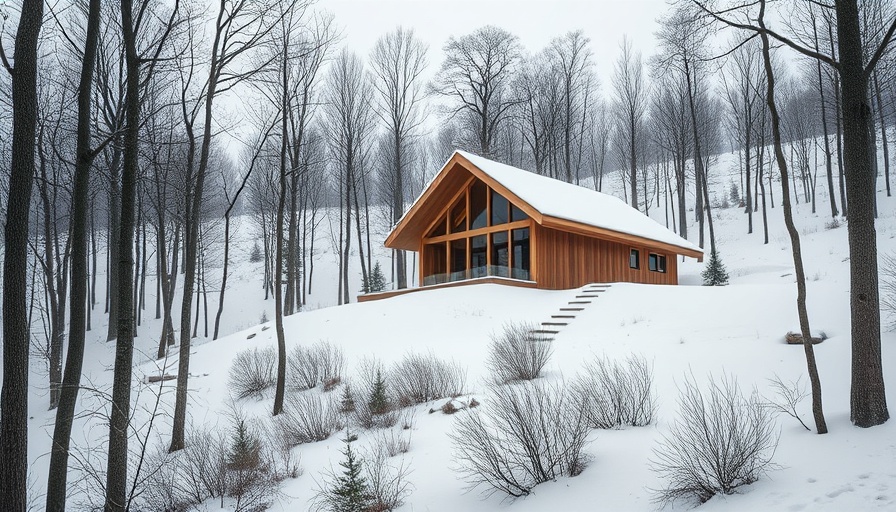
Navigating Comfort in Nature: The Design Philosophy of Q8 Residence
At the heart of the Quebec forest, the Q8 Residence designed by Ménard Dworkind stands as a testament to harmonizing modern living with natural surroundings. Spanning 280 square meters, this architectural marvel is not only a house but a sanctuary that immerses its residents in the serene landscape of Mont Tremblant.
The Architectural Features: Embracing the Environment
The structure is composed of staggered, asymmetrical blocks. Its unique design, with a dynamic facade wrapped in cedar, was conceived through a careful blend of materials and strategic orientations. As co-founder David Dworkind explained, this design fosters a strong connection to nature while simultaneously prioritizing comfort and functionality. The exterior features white cedar shingles, vertical larch siding, and a discreet board-formed concrete wall, creating a tactile experience that resonates with the forest backdrop.
Strategic Design for Comfort and Privacy
Upon approach, the house presents a more closed facade to the road, ensuring privacy and thermal efficiency during the harsh Quebec winters. This thoughtful planning leads to an entrance defined by a zigzag carport that seamlessly connects the home with its surroundings. Inside, the experience evolves; the cozy mudroom transitions into a soaring double-height space where the living, dining, and kitchen areas foster openness, promoting social interaction.
Enhancing the Work-from-Home Experience
For digital nomads, the Q8 Residence is not just about aesthetic appeal but practical usability. The layout includes features that are conducive to remote work, such as a thoughtful separation of living areas from more private spaces. The kitchen, equipped with clever storage solutions, minimizes clutter, allowing for a more efficient workspace.
Maximizing Natural Light for Productivity
The southern glazing floods the interior with natural light, creating a bright and inviting atmosphere—essential for those who spend the day surrounded by screens. This integration of the outside with the inside not only enhances comfort but significantly boosts productivity. Natural light has been proven to improve mood and reduce fatigue, making the Q8 Residence a prime example of how architecture can support a healthy work environment.
Creating Balance: Work-Life Integration in Architecture
Furthermore, the residence’s design facilitates a connection with nature that is critical for work-life balance. The spacious screened-in porch faces the dawn light, providing an ideal spot for morning coffee or afternoon breaks—moments necessary for rejuvenating the mind between tasks. This emphasis on embracing the natural environment allows remote workers to find serenity even in their busiest days.
Concluding Thoughts: Design as a Lifestyle
The Q8 Residence advocates for a lifestyle integrated with nature and comfort, exemplifying how innovative design can influence wellbeing and productivity. The studio's commitment to a cohesive material palette, paired with functional zoning, ensures that residents can thrive in their home workspace. As more professionals shift towards remote work, spaces like these present a reimagined definition of home, championing a healthier, more connected way of living.
 Add Row
Add Row  Add
Add 




Write A Comment